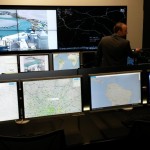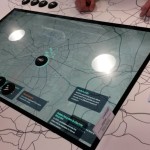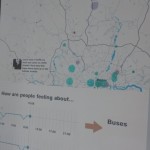Sentiment mappers event | The Reflect Project

Transport Systems Catapult organized the Sentiment Mappers Event last week as part of the Imagine Festival. The presentations proved to be inspiring and informative into ways of mapping people’s sentiments related to journeys with the ultimate goal to improve the customer experience in the transport sector.
I include here a summary of the 5 presentations below, focusing on some of the key points delivered, trying to report the content adequately but not necessarily very committed to the structure.
Transport Systems Catapult visualization studio
Stephen Boyd Davis – Research Leader, Royal College of Arts
Stephen introduced the presentations giving an overview of the importance and reasons for performing sentiment analysis. For example:
What people going from A to B are thinking?
How people cope with disruption?
How do we know what they’re thinking and how they’re feeling?
The transport sector is always judged by the media. Similarly, individuals are often expressing their opinions about transport, and they already share these opinions online (some not very flattering). Sentiment mapping can be applied to gather these opinions and make sense of it. All this data can be used for better planning of transport systems, or can also be used directly by the users themselves. For example, wheel chair users can share sentiment about specific aspects of the transport they’re using, and it can inform better decisions or provide insights about problematic touchpoints.
Erica Ward – Senior Consultant, Temple Group
Erica described some of the challenges of making sentiment mapping happen, and how it can be useful for transport planning. These challenges include data issues, privacy and the missing 50%.
1 Data issues
Most of the data mining for sentiment analysis relies on twitter feeds. However, social media is unrepresentative and can be younger than the whole population (even though we’re observing changing demographics of social media). One of the solutions could be to have sentiment analysis meetings, which are more likely to be attended by older people than youngsters. Other approach could be to provide specific downloadable apps for people to input sentiment, or install physical devices on public spaces. We could also go back to basics, gathering information via paper surveys.
Automated data mining processes like twitter reading models are getting more sophisticated, but are still limited and analysis can be faulty, especially when there’s sarcasm or users provide terms out of context. There’s also ambient discontent and discontent with transport, so it’s important to distinguish between both. We will probably always want a human touch to interpret data, maybe using triangulation with other sources to guarantee data validity.
2 Privacy
When using social media data there’s always a concern of breach of privacy. However, one defence of mining twitter data is that the information is already publicly available, and users can set the privacy levels they are comfortable with. Furthermore, the main objective of the activity is to ultimately contribute to the quality of transport systems as a whole, which is beneficial to the original contributors/users.
3 The missing 50%
People driving cars don’t tweet (hopefully), and they represent about 50% of the transport users. Let’s not forget the 1% of cyclists. Could we capture their sentiment before or after journeys? Or maybe use hands free sentiment mapping device? Or use some wearable devices such as heart rate monitors?
Challenges
So what? What can we do with this information? Mainly get insights, and hopefully come up with designs and solutions to improve transport systems. But it is necessary to achieve rigour, given all the limitations that need to be recognized.
Manchester transport interactive visualization and future scenarios
Rama Gheerawo – Deputy Director, The Helen Hamlyn Centre for Design
Rama presented the importance of a user centred design approach to understand and improve transport for all. He mentioned a demographic tipping point a few years ago when the number of pensioners became larger than teenagers. And these pensioners also have to leave home. He challenged the common saying that ‘every long journey starts with one step’. In fact they start way before that. Journeys begin with conversations and aspirations, with the desire to meet someone, to travel someone, the need to go to the doctor, etc. Mobility should be seen as more than A to B, it is a connection, which involves emotion, not efficiency, people, not users.
Flora Bowden – Research Associate for SustainRCA at Royal College of Arts
Flora presented a cross disciplinary student’s project sponsored by Nissan, simulating how personal transport would look like for young people in 2025. In this medium term cars would still have the steering wheel, and still be owned, maybe representing half way through predicted changes of autonomous driving and shared cars. She pointed out that user research can picture people’s daily activities, but it’s important to think in the longer term, changing lifestyles and phases of life, and it will require building resilience and adaptability into the transport systems.
Mike Saunders – Co founder, Commonplace
Mike presented some examples of sentiment analysis using large amount of data and crossing it with locations and transport hubs, such as the interesting paper Sentiment in New York City: A High Resolution Spatial and Temporal View, from the New England Complex Systems Institute. There is a lot of value to extract from passenger’s insights, but also from devices and vehicles. According to the International Transport Forum, in 10 years, there will be 1bn smart transport devices, including smart cars & intelligent transportation devices.
Twitter live sentiment analysis and mapping
View original:
Sentiment mappers event | The Reflect Project



